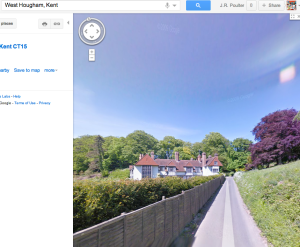By Morten Jerven
In most studies of economic growth the downloaded data from international databases is treated as primary evidence, although in fact it is not. The data available from the international series has been obtained from governments and statistical bureaus, and has then been modified to fit the purpose of the data retailer and its customers. These alterations create some problems, and the conclusions of any study that compares economic performance across several countries depend on which source of growth evidence is used.
The international databases provide no proper sources for their data and no data that would enable analysts to understand why the different sources disagree about growth. See, for example, the disagreement in economic growth series reported by the national statistical office, from Penn World Tables, The World Bank, and the Maddison dataset for Tanzania, 1961-2001.
The average annual disagreement between 1961 and 2001 is 6%. It is not evenly distributed; there is serious dissonance regarding growth in Tanzania in the 1980s and 1990s, and how the effects of economic crisis and structural adjustment affected theeconomy depends on which source you consult.
The problem is that growth evidence in the databases covers years for which no official data was available and the series are compiled from national data that use different base years. The only way to deal satisfactorily with inconsistencies in the data and the effects of revisions is to consult the primary source. The official national accounts are the primary sources.

The advantage of using the national accounts as published by the statistical offices is that they come with guidelines and commentaries. When the underlying methods or basic data used to assemble the accounts are changed, these changes are reported. The downside of the national accounts evidence is that the data is not readily downloadable. The publications may have to be manually collected, and then the process of data entry and interpretation follows. When such studies of growth are done carefully, it offers reconsiderations of what used to be accepted wisdom of economic growth narratives.
I propose a reconsideration of economic growth in Africa in three respects. First, that the focus has been on average economic growth and that there has been no failure of economic growth. In particular the gains made in the 1960s and 1970s have been neglected.
Secondly, for many countries the decline in economic growth in the 1980s was overstated, as was the improvement in economic growth in the 1990s. The coverage of economic activities in GDP measures is incomplete. In the 1980s many economic activities were increasingly missed in the official records thus the decline in the 1980s was overestimated (resulting from declining coverage) and the increase in the 1990s was overestimated (resulting from increasing coverage).
The third important reconsideration is that there is no clear association between economic growth and orthodox economic policies. This is counter to the mainstream interpretation, and suggests that the importance of sound economic policies has been overstated, and that the importance of the external economic conditions have been understated in the prevailing explanation of African economic performance.
We know less than we would like to think about growth and development in Africa based on the official numbers, and the problem starts with the basic input: information. The fact of the matter is that the great majority of economic transactions whether in the rural agricultural sector and in the medium and small scale urban businesses goes by unrecorded.
This is just not a matter of technical accuracy; the arbitrariness of the quantification process produces observations with very large errors and levels of uncertainty. This ‘numbers game’ has taken on a dangerously misleading air of accuracy, and international development actors use the resulting figures to make critical decisions that allocate scarce resources. Governments are not able to make informed decisions because existing data is too weak or the data they need does not exist; scholars are making judgments based on erroneous statistics.
Since the 1990s, in the study of economics, the distance between the observed and the observer is increasing. When international datasets on macroeconomic variables became available, such as the Penn World Tables, and the workhorse of study of economic growth became the cross-country growth regressions the trend turned away from carefully considered country case studies and then rather towards large country studies interested in average effects.
However, the danger of such studies is that it does not ask the right kind of questions of the evidence. As an economic historian, I approach the GDP evidence with the normal questions in source criticism: How good is this observation? Who made this observation? And under what circumstance was this observation made?
Morten Jerven is an economic historian and holds a PhD from the London School of Economics. Since 2009, he has been Assistant Professor at the School for International Studies at Simon Fraser University. He is author of Economic Growth and Measurement Reconsidered in Botswana, Kenya, Tanzania, and Zambia, 1965-1995 and has published widely on African economic development, and particularly on patterns of economic growth and economic development statistics.
Subscribe to the OUPblog via email or RSS.
Subscribe to only business and economics articles on the OUPblog via email or RSS.
Image credit: Tanzanian farmers, by Fanny Schertzer. CC-BY-2.5 S.A via Wikimedia Commons.
The post Why measurement matters appeared first on OUPblog.



















I like it too:)